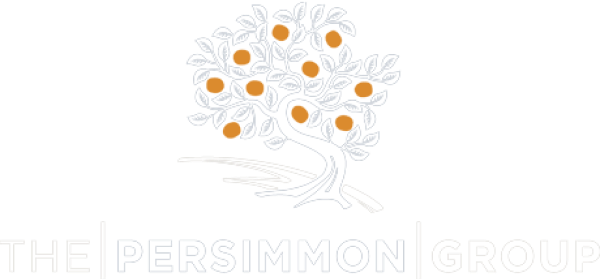Quick Links

From the unsettling revelations of the #MeToo movement to Starbucks company-wide shutdown to the tech industry’s continued failure to increase its diversity, there are plenty of high-profile examples of the damage bias can cause in the workplace.
Less often discussed are the small conflicts, and significant damage to both engagement and financial outcomes, unconscious biases cause in the workplace every day.

Unconscious biases are not the same as bigotry, necessarily. Careful laboratory experiments demonstrate that unconscious biases are grounded in the basic tendency to divide people into groups, a lingering byproduct of human evolution.
The earliest humans lived in small tribes that competed for land and resources. Members of one’s own tribe were sources of help, comfort, and cooperation; members of opposing groups, by contrast, were sources of threat and violence. The winners of this brutal, millennia-long evolutionary bracket prospered, reproduced and formed the roots of our family trees. The losers? Let’s just say there was no prize for second place.
For these early humans, the ability to make a snap judgment about someone’s intentions based on their physical characteristics was an essential survival skill. Today, unconscious biases are a major source of conflict in the workplace.
A study commissioned by the publishers of the Myers-Briggs Assessment showed that U.S. employees spent on average 2.8 hours per week dealing with conflict. That adds up to around $359 billion in paid hours or the equivalent of 385 million working days.
Further, the study showed that 25% of employees have taken a sick day to avoid a workplace conflict. Ten percent reported that workplace conflict led to project failure, and more than 30% said it resulted in someone leaving the company.
Unconscious bias doesn’t have to be a source of conflict in your office. Here are three steps your organization can take to mitigate its effects.
Psychological assessment tools like the Implicit Association Test can help uncover biases you have but were unaware of before. Diversity and inclusion consultant Lily Zheng says that people who are aware of their biases can take them into account and course-correct their actions and decisions.
She writes: “For example, someone might say, ‘I believe that I’ve selected the best people on this panel, but know I’m biased toward men. Let me look one more time with that in mind and see if the outcome changes.’ While the decision may not end up changing, the process of being honest and nonjudgmental about one’s own bias adds both accountability and intentionality.”[1]
Unconscious biases, like heuristics, are mental shortcuts that enable our brains to make quick judgments. A recent study showed that when people make decisions quickly — in a few seconds or fewer — or when they are distracted, they are significantly more biased in their decision making.
The same study, in which participants were asked to assign a series of individuals a punishment for an identical crime, showed that unconscious bias can be overcome with rational deliberation.
“When people had the chance to reflect on their decision, they were largely unbiased, handing out equal punishments to in-group and out-group members,” one of the study’s authors wrote in the New York Times.
The authors of the above-mentioned study note that accusations of unconscious bias are often met with individuals who “protest what they see as a character smear — a suggestion that everybody, deep down, is racist.” For this reason, how organizations frame training and discussion around unconscious bias is extremely important.
Zheng writes: “Depicting diversity and inclusion efforts as ‘weeding out the bad apples’ or otherwise assuming that only a few bad individuals are biased will fail to create a healthy work environment.”
Rather, organizations should treat unconscious biases as what they are, unavoidable human traits, and create an environment of safety and empathy in which to address them.
“Organizations are built by biased people working together to be self-aware, instead of objective people working to stave off their irrational biases,” Zheng continues. “Our relationship with bias is one of healing and growth, rather than a ‘fight.’ And our life experiences that contributed to who we are today are assets, rather than sources of shame.”
[1] https://qz.com/work/1349271/what-to-do-with-your-implicit-bias/
Practical strategies to help you thrive in Leadership, Project Management, and more.

11 East 5th Street
Suite 300
Tulsa OK 74103
918-592-4121
888-392-7101
| Cookie | Duration | Description |
|---|---|---|
| cookielawinfo-checkbox-analytics | 11 months | This cookie is set by GDPR Cookie Consent plugin. The cookie is used to store the user consent for the cookies in the category "Analytics". |
| cookielawinfo-checkbox-functional | 11 months | The cookie is set by GDPR cookie consent to record the user consent for the cookies in the category "Functional". |
| cookielawinfo-checkbox-necessary | 11 months | This cookie is set by GDPR Cookie Consent plugin. The cookies is used to store the user consent for the cookies in the category "Necessary". |
| cookielawinfo-checkbox-others | 11 months | This cookie is set by GDPR Cookie Consent plugin. The cookie is used to store the user consent for the cookies in the category "Other. |
| cookielawinfo-checkbox-performance | 11 months | This cookie is set by GDPR Cookie Consent plugin. The cookie is used to store the user consent for the cookies in the category "Performance". |
| viewed_cookie_policy | 11 months | The cookie is set by the GDPR Cookie Consent plugin and is used to store whether or not user has consented to the use of cookies. It does not store any personal data. |